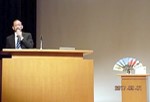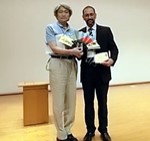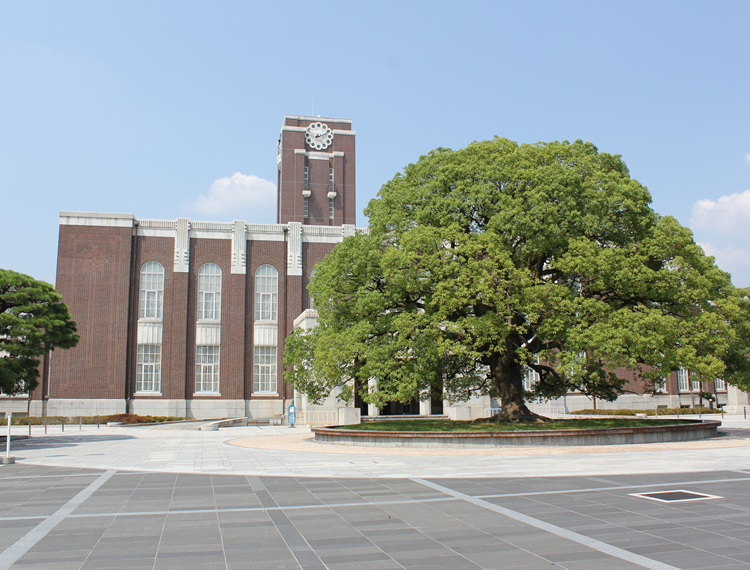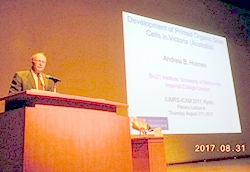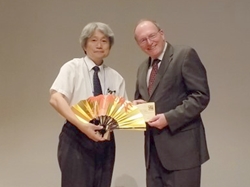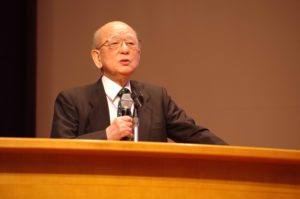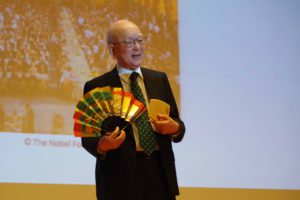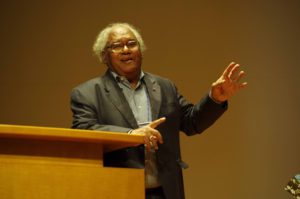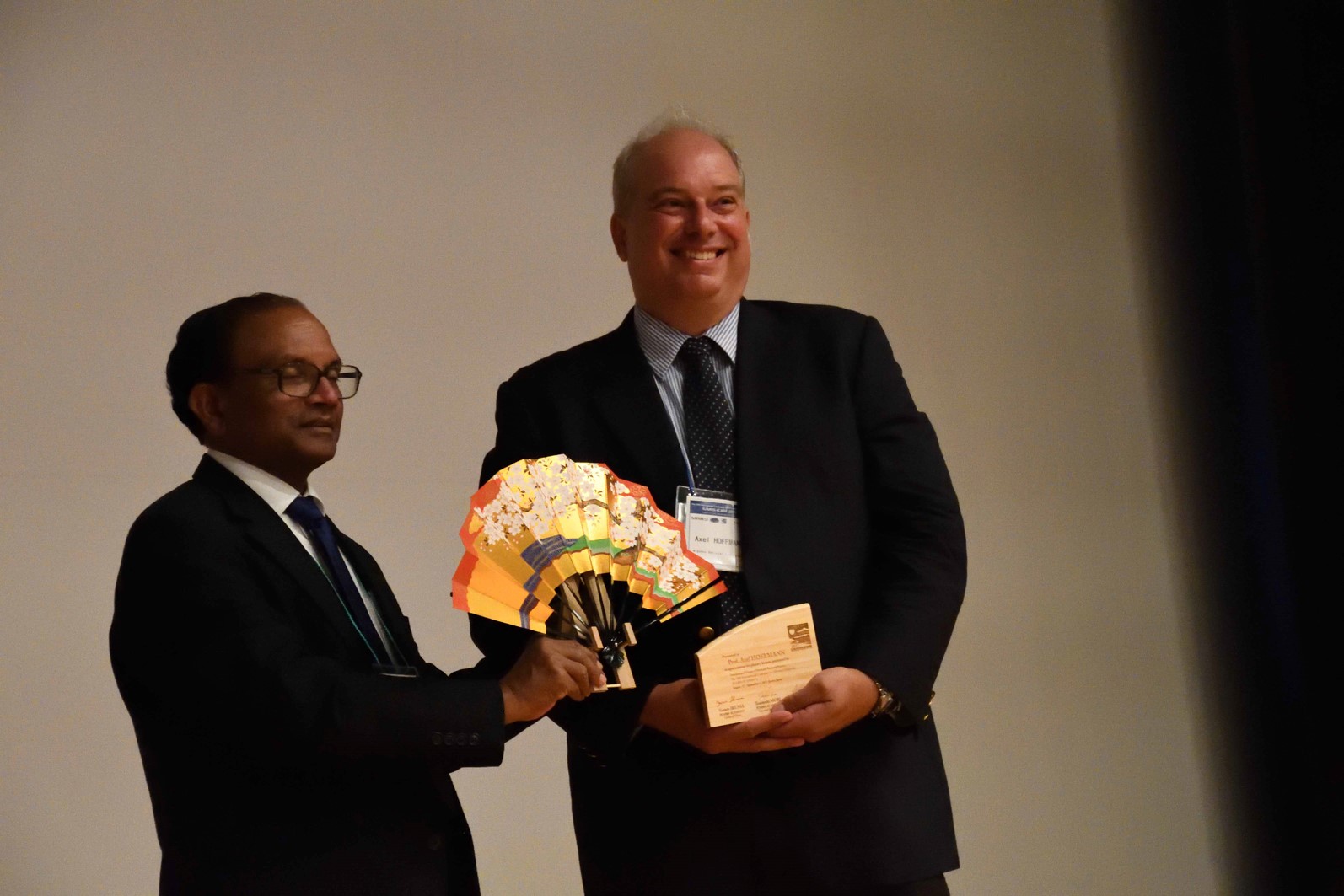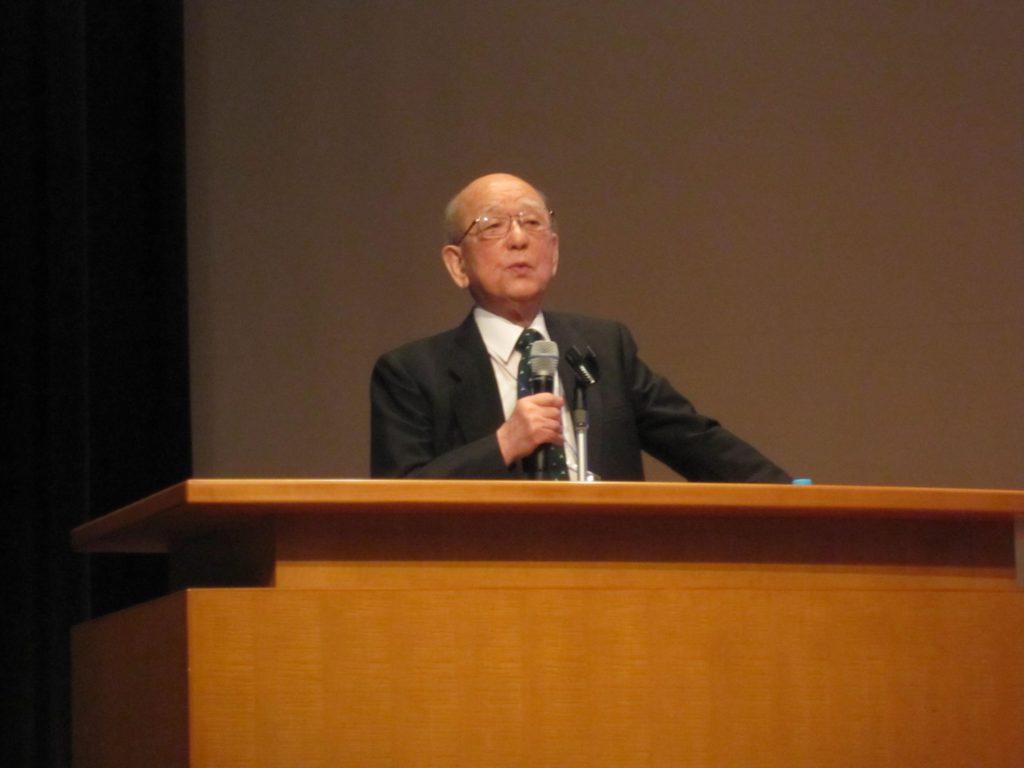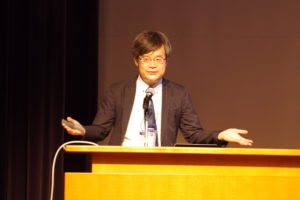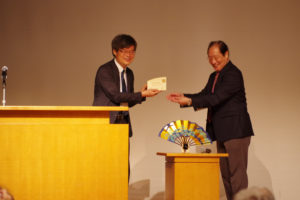C.N.R. RAO, National Research Professor
Wednesday, August 30, 2017 12:00-12:40
Prof. Rao, National Professor and Linus Pauling Research Professor at the Jawaharlal Nehru Center for Advanced Scientific Research, passionately explained the wonders of the low dimensional nanostructures and the layered 2D materials including MoS2, WS2, GaS, BN, and carbon nitrides and their fascinating properties including high surface area, band gaps and porosity. He beautifully explained how these materials can conquer the world of advanced materials research by offering amazing performance in many applications including energy storage, hydrogen generation, optoelectronic devices, magnetism, superconductivity, and catalysis.
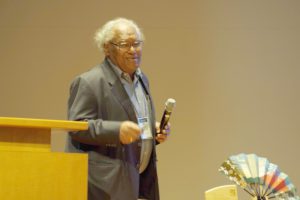
As we all expected, Rao presented several strategies to make a library of new advanced nanostructures. One of the main highlights of his talk is the novel strategies for generating covalently linked heterostructures of different two-dimensional layered materials whose properties are completely different from those of van der Waals heterostructures. By simply using Sonogashira coupling and carbodimide based coupling, his groups generated ladder-like multilayered structures which cannot be prepared by a simple van der Waals interactions. Unique strategies have been presented to fabricate graphene coupled with 1D, 2D and zero dimensional metal organic frameworks. At one point, the audience wondered what materials and the research topic Prof. Rao missed in his talk as he covered the topics including materials chemistry, organic chemistry, physics, theoretical chemistry, nanochemistry, etc. It was absolutely a mesmerizing talk and offered the researchers a pool of novel ideas and venues to work on advancing the nanomaterials research. The performance of these nanostructures have been amazingly demonstrated in hydrogen generation via photocatalytic water splitting, electrocatalysis and heterogeneous catalysis.
On the fundamental side, Prof. Rao presented the interaction of electron donar and acceptor molecules and their relation with the electronic structure and properties of these new class of materials including phospherenes. At the end of the talk, he told the audience that the covalently bonded heterostructures are just the beginning and a lot of new structures to be explored including chalcogenides-chalcogenides, Chalcogenides-nitrides, and/or with arsenene or germanane. These unique materials are going to make a revolution in the field of advanced materials science and energy generation which eventually help to protect the people and economy.
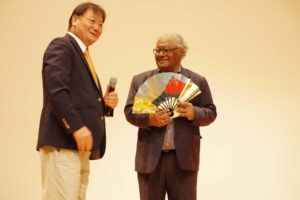
Posted by Prof. Ajayan Vinu, FRSC
Future Industries Institute, University of South Australia
